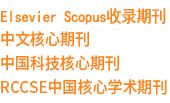| [1] |
Yaar M, Gilchrest B A. Photoageing: mechanism, prevention and therapy[J]. Br. J. Dermatol., 2007, 157 (5) : 874-887.
|
| [2] |
Salminen A, Kaarniranta K, Kauppinen A. Photoaging: UV radiation-induced inflammation and immunosuppression accelerate the aging process in the skin[J]. Inflamm. Res., 2022, 71 (7-8) : 817-831.
|
| [3] |
Rittié L, Fisher G J. Natural and sun-induced aging of human skin[J]. Cold Spring Harb. Perspect. Med., 2015, 5 (1) : a015370.
|
| [4] |
Ikehata H, Yamamoto M. Roles of the KEAP1-NRF2 system in mammalian skin exposed to UV radiation[J]. Toxicol. Appl. Pharmacol., 2018, 360: 69-77.
|
| [5] |
Kumar M, Suhag R, Hasan M, et al. Black soybean (Glycine max (L.) Merr.): paving the way toward new nutraceutical[J]. Crit. Rev. Food Sci. Nutr., 2023, 63 (23) : 6208-6234.
|
| [6] |
Yamashita Y, Sakakibara H, Toda T, et al. Insights into the potential benefits of black soybean (Glycine max L.) polyphenols in lifestyle diseases[J]. Food Funct., 2020, 11 (9) : 7321-7339.
|
| [7] |
Lai J, Xin C, Zhao Y, et al. Study of active ingredients in black soybean sprouts and their safety in cosmetic use[J]. Molecules, 2012, 17 (10) : 11669-11679.
|
| [8] |
Li N, Wen L, Li T, et al. Alleviating effects of black soybean peptide on oxidative stress injury induced by lead in PC12 cells via Keap1/Nrf2/TXNIP signaling pathway[J]. Nutrients, 2022, 14 (15) : 3102.
|
| [9] |
任海伟, 王常青, 宋育璇. 黑豆多肽分离及其抗氧化活性的研究[J]. 天然产物研究与开发, 2009, 21 (1) : 136-139.
|
| [10] |
王常青, 任海伟, 王海凤, 等. 黑豆多肽对D-半乳糖衰老小鼠抗氧化能力的影响[J]. 食品科学, 2010, 31 (3) : 262-266.
|
| [11] |
樊迎, 王常青, 王菲, 等. 黑豆乳清多肽抗皮肤光老化作用的研究[J]. 天然产物研究与开发, 2013, 25 (4) : 539-543, 518.
|
| [12] |
Wang H, Zhang M, Xu X, et al. IKKα mediates UVB-induced cell apoptosis by regulating p53 pathway activation[J]. Ecotoxicol. Environ. Saf., 2021, 227: 112892.
|
| [13] |
Rhee SM, Jeon S, Han J, et al. The Effect of combining hyaluronic acid and human dermal fibroblasts on tendon healing[J]. Am. J. Sports Med., 2023, 51 (12) : 3243-3250.
|
| [14] |
Landau M, Fagien S. Science of hyaluronic acid beyond filling: fibroblasts and their response to the extracellular matrix[J]. Plast. Reconstr. Surg., 2015, 136 (5 Suppl) : 188-195.
|
| [15] |
Li P, Wu G. Roles of dietary glycine, proline, and hydroxyproline in collagen synthesis and animal growth[J]. Amino Acids, 2018, 50 (1) : 29-38.
|
| [16] |
Song S, Fu Z, Guan R, et al. Intracellular hydroxyproline imprinting following resolution of bleomycin-induced pulmonary fibrosis[J]. Eur. Respir. J., 2022, 59 (5) : 2100864.
|
| [17] |
Qin X Y, Xu Y, Wei Y, et al. Effects of topical application of different molecular weight marine fish skin collagen oligopeptides on UVB-induced photoaging rat skin[J]. J. Cosmet. Dermatol., 2022, 21 (5) : 2205-2214.
|
| [18] |
Qu L, Wang F, Ma X. The extract from Portulaca oleracea L. rehabilitates skin photoaging via adjusting miR-138-5p/Sirt1-mediated inflammation and oxidative stress[J]. Heliyon, 2023, 9 (11) : e21955.
|
| [19] |
Bravo K, Duque L, Ferreres F, et al. Passiflora tarminiana fruits reduce UVB-induced photoaging in human skin fibroblasts[J]. J. Photochem. Photobiol. B., 2017, 168: 78-88.
|
| [20] |
王燕华, 蔡丽敏, 杨晶, 等. 紫外线诱导人皮肤成纤维细胞形态改变及对基质金属蛋白酶表达的影响[J]. 基础医学与临床, 2017, 37 (3) : 360-363.
|
| [21] |
Cadet J, Douki T, Ravanat J L. Oxidatively generated damage to cellular DNA by UVB and UVA radiation[J]. Photochem. Photobiol., 2015, 91 (1) : 140-155.
|
| [22] |
Kawachi Y, Xu X, Taguchi S, et al. Attenuation of UVB-induced sunburn reaction and oxidative DNA damage with no alterations in UVB-induced skin carcinogenesis in Nrf2 gene-deficient mice[J]. J. Invest. Dermatol., 2008, 128 (7) : 1773-1779.
|
| [23] |
Yue Q, Chen X, Gao J, et al. Dendrobine protects HACAT cells from H (2) O (2) -induced oxidative stress and apoptosis damage via Nrf2/Keap1/ARE signaling pathway[J]. Toxicol. Appl. Pharmacol., 2022, 454: 116217.
|
| [24] |
Shin J M, Kim M Y, Sohn K C, et al. Nrf2 negatively regulates melanogenesis by modulating PI3K/Akt signaling[J]. PLoS One, 2014, 9 (4) : e96035.
|



 ),Limin Fan1,Huanying Li1
),Limin Fan1,Huanying Li1